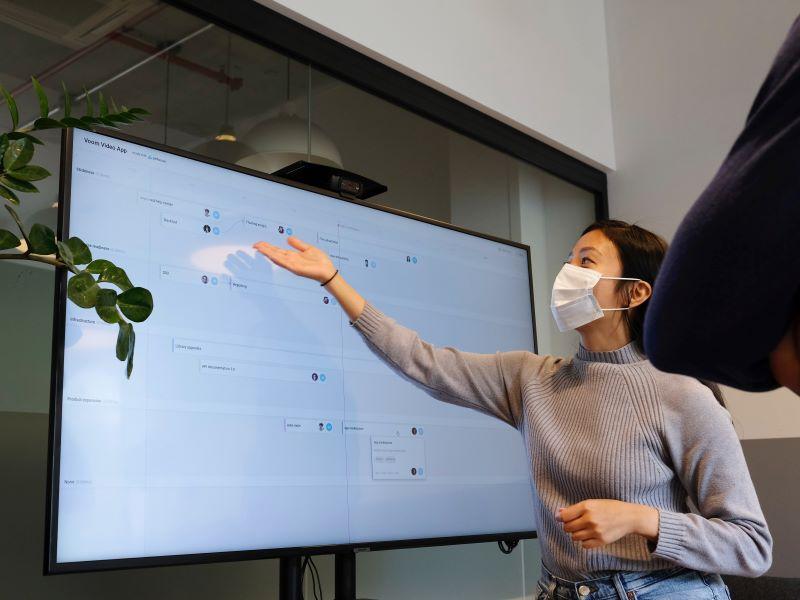Assessment methods, especially in the first year of study for those students who have not arrived at university through the traditional route, can impact heavily on the attainment gap within a mixed entry cohort. The use of multimedia for assessment not only designs in inclusivity but is also effective in designing out plagiarism and gives students experience in developing digital, employability and enterprise skills.
How to design, support and grade non-traditional assessments, though, is often a barrier to putting them in place. Using the following tips, the experience can be a very rewarding one for staff and students.
- Assessment design that supports authentic learning (and discourages cheating)
- Equity, agency and transparency: making assessment work better for students and academics
- Assessing your assessment: creating inclusive and meaningful assignments
Getting started – design the assessment
Think about the existing assessment – does it have potential for enhancement or transformation with digital tools? The SAMR model developed by Ruben Puentedura is one excellent framework that gives you the structure to explore technologies used in teaching and learning, with a four-stage model: redefinition, modification, augmentation and substitution. Adapting the model to allow for multimedia assessment enables the module or course team to identify areas of development and possible stages of implementation.
- Substitution (enhance): technology acts as a direct tool substitute, with no functional change
- Augmentation (enhance): technology acts as a direct tool substitute, with functional improvement
- Modification (transform): technology allows for significant task redesign
- Redefinition (transform): technology allows for the creation of new tasks, previously inconceivable.
How this might work in practice, to give the example of a handwritten essay handed in in person at the student support desk, could be using an online word editor to submit digitally (substitution) or using a blogging platform to give students the choice of submission type – video, podcast, blog post, presentation (redefinition).
Work with students to redesign assessment methods – the co-development approach helps to capture students’ previous experience, highlight their digital skills and clarify their aspirations.
Student support and development
Check which multimedia software is provided by your institution. Not only will this ensure that students have free access to the software – making the assessment inclusive – but it will also mean that support will be built in for students through the usual channels. Third party software (even if it is free) should be avoided as this will place pressure on the tutor to provide all the training and support and also may cross GDPR boundaries.
Make the process iterative. It is essential that time is built into the module to allow students to practise, develop skills and make mistakes in a safe space.
Submission
Investigate thoroughly the technological elements needed for successful submission. These include the file size allowed in uploading the assessment, whether the native file needs exporting into a different format for viewing and whether the file needs uploading on campus because of bandwidth issues. Also important is making sure the submission time is inside student support hours so that any issues can be rectified before the deadline passes.
Having clear instructions in advance on these elements can reduce any last-minute submission panic for students and tutors.
Grading
Decide what is to be graded. Is it the content that is the most important, or the design and implementation of the artefact, or is it both? Be clear about how those graded elements link to the module learning outcomes and also to student future aspirations. If design is a key factor in the grading, be clear about audience and platform as this will also affect decisions in the development process. Work with students if possible to develop grading criteria, as this can give students ownership over their assessment engagement and reduce attainment gaps within the cohort. This way of working also removes unconscious bias in grading.
The use of a detailed rubric makes the grading criteria of the different elements and expectations explicit to students and graders.
Feedback
Try giving feedback with multimedia tools – both audio and video. This is a great way to model the inclusive assessment approach. There are many articles and case studies about how to embed this in your assessment practices, but the overwhelming response is that students engage better with feedback when it is more personalised and multimedia tools are a great way to achieve this.
The importance of feedback is well documented, the use of multimedia tools to deliver feedback can help you identify whether students are engaging with it.
Building in these strategies – getting started, student support and development, grading and feedback – to your design thinking will help structure the successful development and implementation of your multimedia assessment by embedding inclusivity and unleashing creativity.
Rachel Challen is learning, teaching and staff development manager in the School of Arts and Humanities at Nottingham Trent University.




comment